


If you've ever cleaned the top of cupboard, or high bookshelf, you'll know that just because things are high off the ground, doesn't mean they don't get dirty. Anything with a surface horizontal enough to stop a particle of dust or pollution from falling, will, over time, build up a layer of dirt. Decorative plasterwork is a case in point.
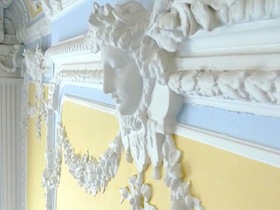

Beautiful mouldings in plaster have been used for centuries to decorate the interiors of rooms - particularly on high walls and ceilings - however just like surfaces closer to the ground, plasterwork needs to be cleaned to remain looking its best.
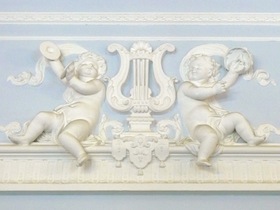

Above and below are some before and after photographs from one of our projects where we cleaned some ornate rooms from top to bottom.
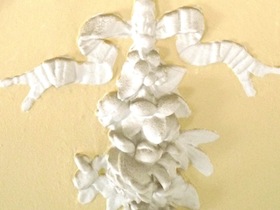
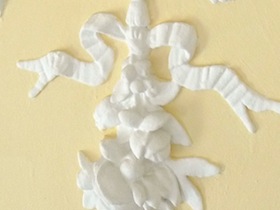
Once dirt has been removed from surfaces the visual impact can be really quite dramatic. This is not only because the surfaces look cleaner, but also because to the eye the greyness of dirt looks like shadows, so cleaning it away doubly brightens the look a room.
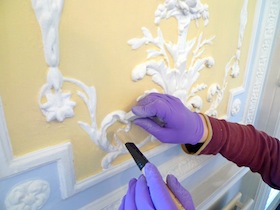 Dust can be removed from plasterwork using pony or sable hair brushes and museum vacuum machines. Foam erasers and smoke sponges are an effective 'dry' way of cleaning away more stubborn dirt, and provided the plasterwork is not damaged or painted with a water soluble paint then very small quantities of of distilled water mixed with conservation detergent can be used to remove stains.
Dust can be removed from plasterwork using pony or sable hair brushes and museum vacuum machines. Foam erasers and smoke sponges are an effective 'dry' way of cleaning away more stubborn dirt, and provided the plasterwork is not damaged or painted with a water soluble paint then very small quantities of of distilled water mixed with conservation detergent can be used to remove stains.
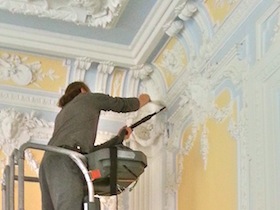

People are often quite surprised just how much of a difference cleaning can make. One of our recent clients thought they were going to need to have their historic rooms redecorated, however after we patch tested an area and showed them what conservation cleaning would do, they just had the rooms cleaned instead.